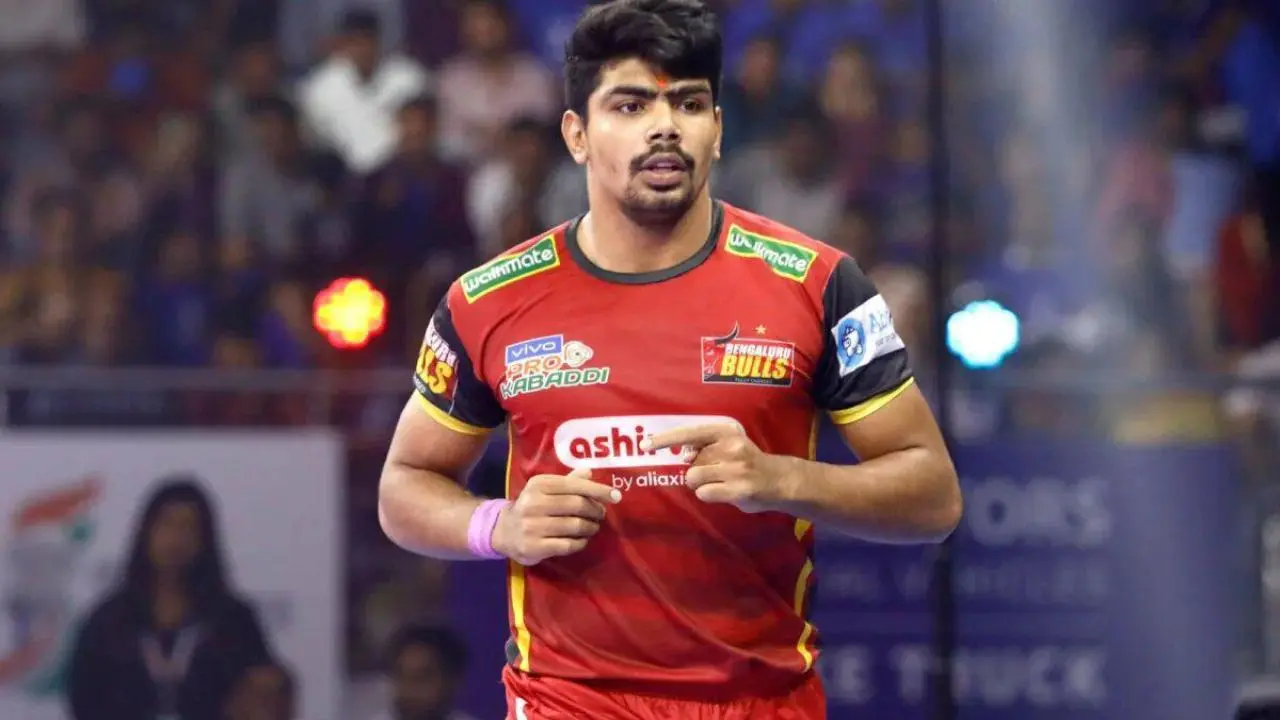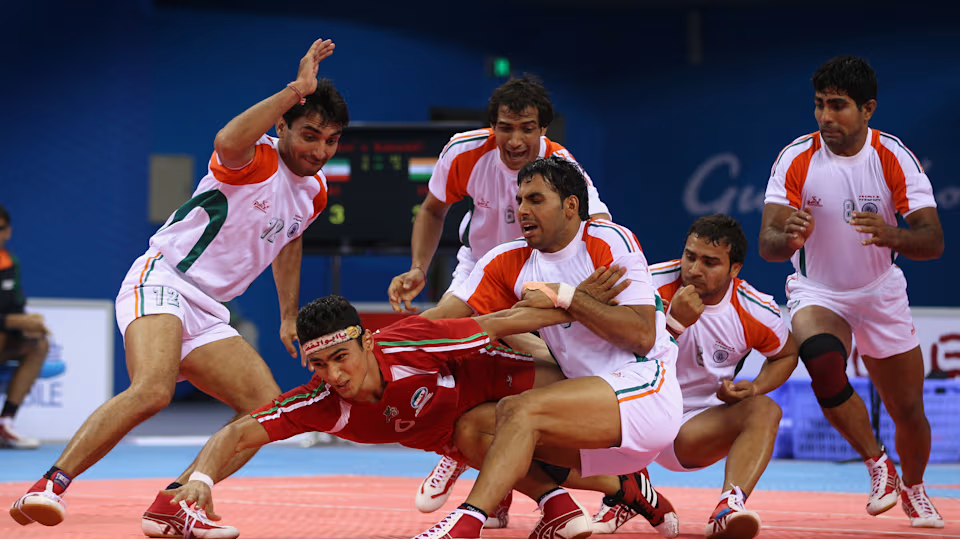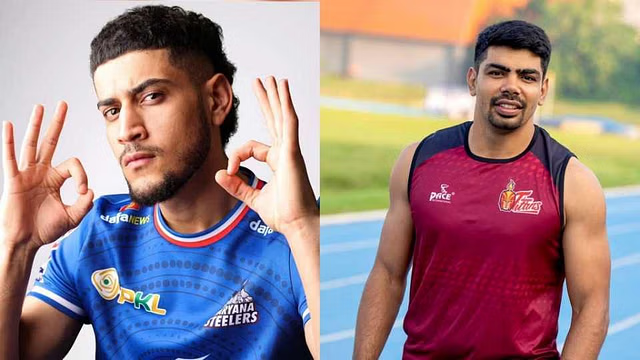Kabaddi, like many sports, has undergone a significant transformation over the years. Players have adapted to new training techniques, improved their physical conditioning, and refined their skills to keep up with the increasing speed and intensity of the game. The evolution of Kabaddi players is not just about physical changes but also about the mental approach and strategies employed by top-tier athletes. In this article, we’ll explore how Kabaddi players have evolved and what this means for the future of the sport.

- The Traditional Kabaddi Player: Strength and Stamina
In the past, Kabaddi players were often defined by their physical strength and stamina. The game was slower, and defenders focused on overpowering raiders with brute force. Raiders, on the other hand, used sheer power and determination to break through the defense and score points.
Key Characteristics of Traditional Kabaddi Players:
- Physical Power: Defenders and raiders alike relied heavily on their strength. A strong raider could force defenders out of the way, while defenders used their power to overpower raiders.
- Endurance: Players needed exceptional stamina to maintain their performance throughout the match. Long raids and extended defensive battles were commonplace, requiring athletes to stay engaged for longer periods of time.
- Tactical Simplicity: While the game still had strategy, it was less complex than it is today. Raiders and defenders often relied on basic tactics such as brute force tackles and straightforward raids.
Advanced Tips for Training in Traditional Kabaddi:
- Focus on Strength Training: In traditional Kabaddi, strength was the key to success. Players still benefit from maintaining a strong physique, especially when engaging in one-on-one confrontations with raiders or defenders.
- Condition for Endurance: Long matches demand high levels of endurance. Players should incorporate cardiovascular and stamina-building exercises into their routines to keep up with the demands of the sport.
- The Rise of Tactical Play: Strategy and Precision
As Kabaddi evolved, players began to focus more on strategy and precision. The rise of tactical thinking shifted the focus from sheer strength to intelligent play. Players started to rely on agility, quick decision-making, and well-executed team strategies rather than simply overpowering opponents.
Key Changes in Modern Kabaddi Players:
- Agility Over Strength: Today’s raiders are known for their speed and agility. The emphasis is on dodging tackles, reading the defense, and executing quick, calculated raids rather than relying solely on strength.
- Improved Defensive Strategies: Defenders are no longer just focusing on strength; they use tactics such as chain defenses, coordinated tackles, and positioning to stop raiders. This shift has made defending more about technique than physical power.
- Mental Toughness: Modern players train to be mentally tough, with strategies in place to outsmart opponents. The psychological aspect of Kabaddi, including reading the opponent’s moves and bluffing, has become more important.
Advanced Tips for Adapting to Tactical Kabaddi:
- Practice Quick Decision-Making: Modern Kabaddi requires players to think on their feet. Raiders and defenders alike must make quick decisions in real-time. Focus on developing your ability to process information quickly and make the right move.
- Master Defensive Tactics: As defenders become more skilled in using positioning and team coordination, raiders must learn to counter these tactics. Understanding the most common defensive strategies is crucial for success.
- Physical Conditioning in Modern Kabaddi
One of the most significant changes in Kabaddi is the emphasis on physical conditioning. Today’s Kabaddi players train like athletes in other professional sports, focusing on speed, agility, strength, and flexibility.
Changes in Training and Conditioning:
- Strength and Conditioning: Kabaddi players now follow strength and conditioning programs similar to those in other professional sports. This includes weight training, endurance exercises, and flexibility drills.
- Speed and Agility: Modern Kabaddi players prioritize speed and agility over raw strength. They work on improving their reflexes, footwork, and quickness to stay ahead of the competition.
- Injury Prevention: With the intensity of the modern game, injury prevention has become a priority. Players focus on recovery, stretching, and strengthening key muscle groups to reduce the risk of injuries.
Advanced Tips for Modern Kabaddi Training:
- Incorporate Cross-Training: To build strength, speed, and endurance, Kabaddi players should incorporate cross-training routines, such as sprinting, plyometrics, and yoga, into their regimen.
- Focus on Flexibility: Flexibility is crucial for quick movements and avoiding injuries. Stretching regularly and practicing dynamic movements can significantly improve a player’s agility.
- The Future of Kabaddi Players: Embracing Technology and Innovation
As the sport of Kabaddi continues to grow, players are starting to incorporate technology into their training regimens. Video analysis, fitness trackers, and even virtual reality are beginning to play a role in how players improve their performance.
Emerging Trends in Kabaddi Player Development:
- Video Analysis: Players now use video analysis to break down their performance and study their opponents. This technology helps players identify weaknesses in their own play and learn from the best in the sport.
- Fitness Trackers: Wearable fitness trackers help players monitor their physical condition, including heart rate, calories burned, and recovery time, allowing them to optimize their training.
- Virtual Reality: Virtual reality technology is being used to simulate real-game situations, giving players the chance to practice tactics and improve decision-making without the need for a physical game.
Advanced Tips for Future Players:
- Embrace Technology: Modern players should take advantage of video analysis and fitness trackers to track progress and optimize performance. Virtual reality can also offer a unique way to practice under pressure.
- Adapt to Changing Trends: Stay open to new methods of training and development. Kabaddi is evolving, and embracing new techniques can give players an edge over the competition.
- The Impact of Kabaddi’s Globalization on Player Evolution
With Kabaddi expanding internationally, players from different regions are bringing their own styles, techniques, and approaches to the sport. This globalization is influencing how players train and play, leading to more diverse and innovative strategies.
Global Influence on Kabaddi:
- Diverse Playing Styles: Kabaddi’s global expansion has led to the incorporation of various playing styles. Players from countries like Iran, South Korea, and Japan are bringing new techniques and strategies to the game, influencing players worldwide.
- International Training Camps: As Kabaddi becomes more global, international training camps and tournaments are helping players exchange ideas and improve their skills. This cross-cultural exchange is elevating the overall level of play.
Advanced Tips for Embracing Global Trends:
- Learn from International Players: Study the playing styles of international Kabaddi players. Incorporating techniques from other countries can help you stay ahead of the curve.
- Attend Global Tournaments: Participate in or watch international tournaments to see how different teams approach the game. This exposure will provide valuable insights into new strategies and tactics.





